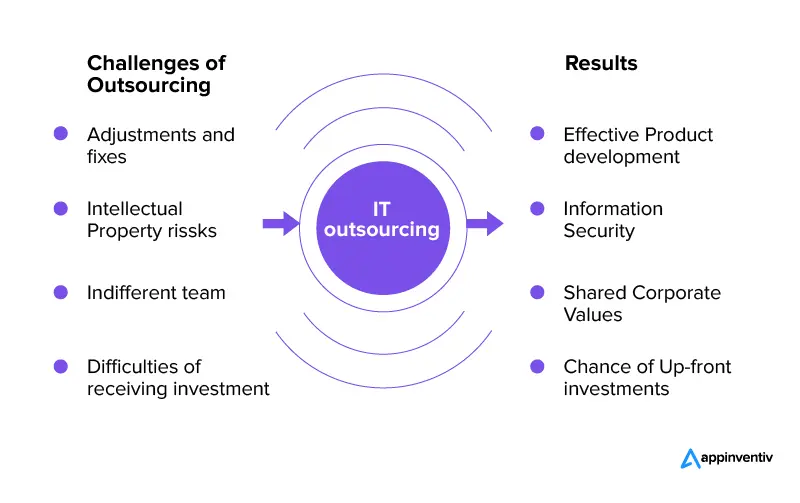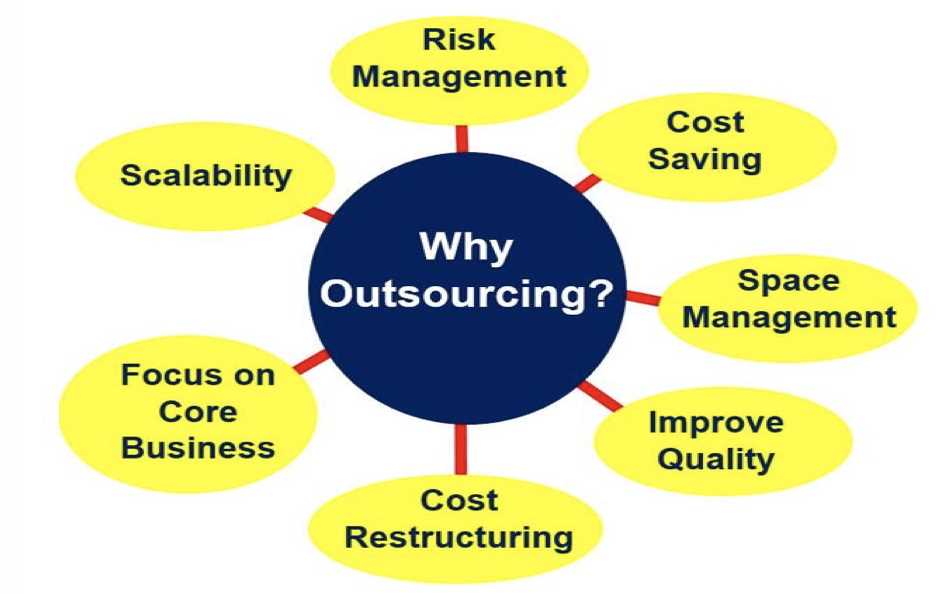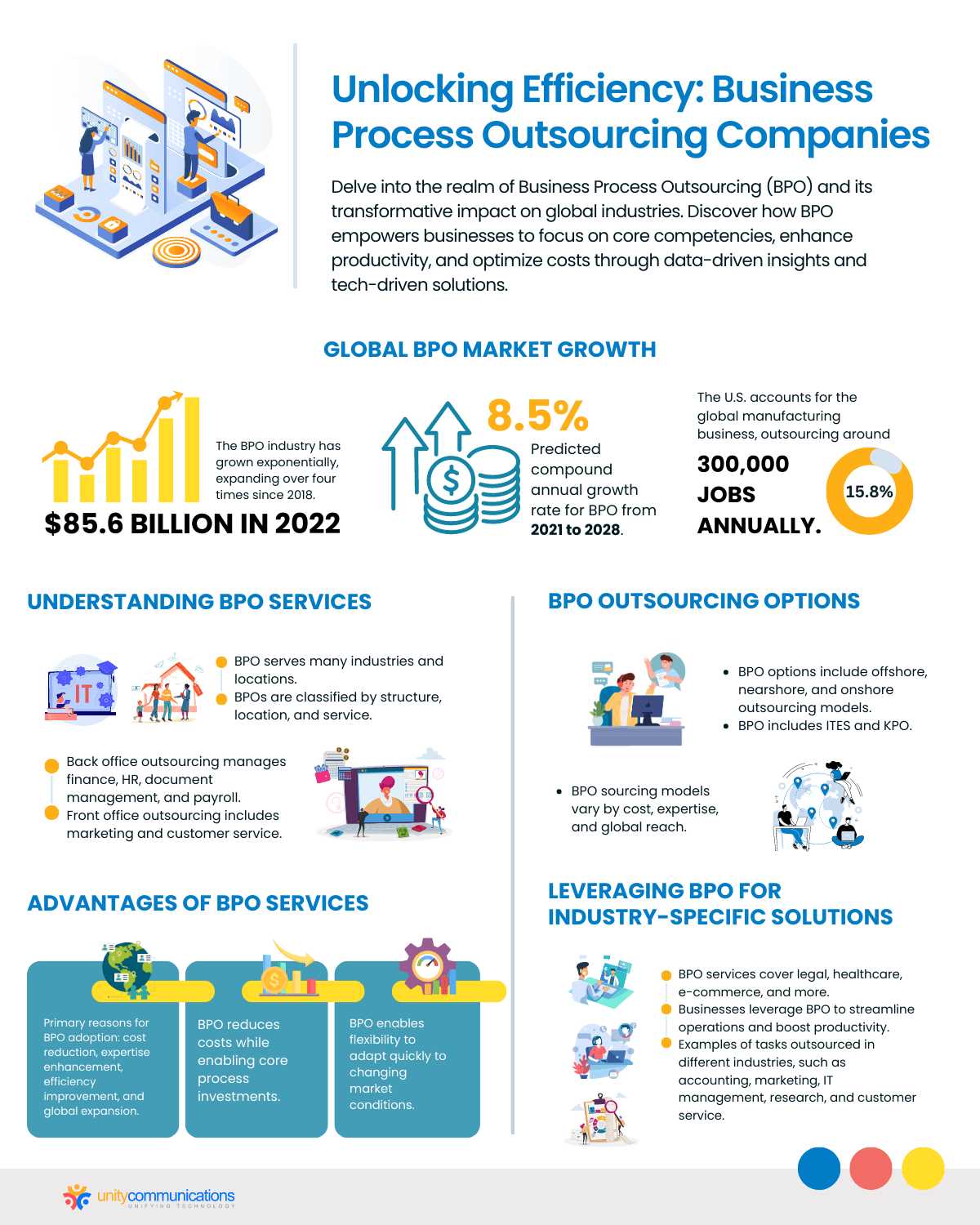What is outsourcing?
Outsourcing is a business practice where a company hires another company or individual to perform certain tasks or provide specific services. It involves delegating certain functions or processes to external parties rather than handling them internally.
Outsourcing can be applied to various areas of business, such as IT, customer service, manufacturing, marketing, and more. It allows companies to focus on their core competencies while benefiting from the expertise and resources of external partners.
There are different types of outsourcing arrangements, including onshore outsourcing (hiring companies within the same country), offshore outsourcing (hiring companies in different countries), and nearshore outsourcing (hiring companies in neighboring countries).
Companies choose to outsource for several reasons, including cost savings, access to specialized skills, increased efficiency, scalability, and flexibility. By outsourcing non-core functions, companies can allocate their resources more effectively and concentrate on strategic activities that drive growth and innovation.
Overall, outsourcing has become an integral part of modern business strategies, enabling companies to optimize their operations and stay competitive in a global marketplace.
Benefits of Outsourcing
Outsourcing has become a popular business strategy for many companies around the world. By outsourcing certain tasks or processes to external service providers, businesses can reap a number of benefits. Here are some of the key advantages of outsourcing:
1. Cost Savings
One of the main reasons why companies choose to outsource is to reduce costs. Outsourcing allows businesses to access skilled labor at a lower cost compared to hiring and training in-house employees. By outsourcing, companies can save on salaries, benefits, and other expenses associated with maintaining a full-time workforce.
2. Focus on Core Competencies

Outsourcing non-core activities allows companies to focus their time, energy, and resources on their core competencies. By delegating tasks such as IT support, customer service, or accounting to external experts, businesses can concentrate on what they do best and improve their overall efficiency and productivity.
3. Access to Specialized Skills and Expertise
Outsourcing provides companies with access to specialized skills and expertise that may not be available internally. External service providers often have a wealth of knowledge and experience in their specific field, allowing businesses to benefit from their expertise without having to invest in extensive training or hiring additional staff.
4. Increased Flexibility and Scalability

Outsourcing offers companies greater flexibility and scalability. As business needs change, companies can easily adjust the level of outsourcing to meet their requirements. Whether it’s scaling up during peak periods or scaling down during slower periods, outsourcing allows businesses to adapt quickly and efficiently without the need for significant investments or restructuring.
5. Improved Service Quality

By outsourcing certain tasks to specialized service providers, companies can often improve the quality of their services. External providers are typically focused on delivering high-quality results and meeting specific performance metrics. This can lead to improved customer satisfaction, increased customer loyalty, and ultimately, better business outcomes.
| Benefits of Outsourcing |
|---|
| Cost Savings |
| Focus on Core Competencies |
| Access to Specialized Skills and Expertise |
| Increased Flexibility and Scalability |
| Improved Service Quality |
Examples of Outsourcing in Business
Outsourcing has become a common practice in the business world, with companies of all sizes and industries taking advantage of its benefits. Here are some examples of how outsourcing is used in different areas of business:
1. Manufacturing: Many companies outsource their manufacturing processes to countries with lower labor costs, such as China or India. This allows them to save on production costs and focus on other aspects of their business.
2. Information Technology: IT outsourcing is a popular choice for businesses looking to reduce costs and access specialized expertise. Companies can outsource tasks such as software development, network management, and technical support to external providers.
3. Customer Service: Outsourcing customer service functions, such as call centers or chat support, is a common practice for companies that want to provide 24/7 support without the need for a large in-house team. This can help improve customer satisfaction and reduce costs.
4. Human Resources: Many companies outsource their HR functions, such as payroll processing, recruitment, and employee benefits administration. This allows them to focus on core business activities while ensuring HR tasks are handled efficiently.
5. Accounting and Finance: Outsourcing accounting and finance functions can help companies streamline their financial processes and reduce costs. Tasks such as bookkeeping, tax preparation, and financial analysis can be outsourced to specialized firms.
6. Marketing and Advertising: Outsourcing marketing and advertising activities, such as social media management, content creation, and campaign planning, can help companies access specialized expertise and improve their marketing efforts.
These are just a few examples of how outsourcing is used in business. The specific outsourcing needs of a company will depend on its industry, size, and goals. By outsourcing certain tasks, businesses can focus on their core competencies, reduce costs, and improve efficiency.
IT outsourcing
IT outsourcing is the practice of hiring external companies or individuals to handle IT functions and services for a business. This can include tasks such as software development, network management, data storage, and technical support.
There are several reasons why businesses choose to outsource their IT needs. One of the main benefits is cost savings. By outsourcing IT functions, businesses can avoid the expenses associated with hiring and training in-house IT staff. Additionally, outsourcing allows businesses to access specialized expertise and resources that may not be available internally.
IT outsourcing can take various forms, depending on the specific needs of the business. Some businesses may choose to outsource their entire IT department, while others may outsource specific tasks or projects. Outsourcing can be done onshore, nearshore, or offshore, depending on the location of the external service provider.
There are many examples of IT outsourcing in business. For example, a small startup may outsource their software development to a specialized IT firm, allowing them to focus on their core business activities. Similarly, a large corporation may outsource their technical support to a call center overseas, taking advantage of cost savings and 24/7 availability.
When outsourcing IT services, it is important for businesses to carefully evaluate potential service providers. Factors such as reputation, experience, and security measures should be taken into consideration. Additionally, clear communication and a well-defined contract are essential to ensure that both parties understand their roles and responsibilities.
Customer Service Outsourcing
Customer service outsourcing is the practice of hiring a third-party company to handle customer support and service-related tasks. This can include answering customer inquiries, resolving complaints, and providing assistance with product or service-related issues.
Many businesses choose to outsource their customer service functions because it offers several benefits. First, outsourcing customer service allows companies to focus on their core competencies and strategic initiatives, rather than getting bogged down in day-to-day customer interactions.
Second, outsourcing customer service can be cost-effective. By hiring a third-party company, businesses can avoid the expenses associated with hiring and training in-house customer service representatives. Additionally, outsourcing can provide access to a larger pool of skilled customer service professionals, potentially leading to higher customer satisfaction rates.
Furthermore, customer service outsourcing can provide businesses with the flexibility to scale their operations as needed. During peak seasons or periods of high demand, outsourcing allows companies to quickly ramp up their customer service capabilities without the need to hire and train additional staff.
However, it is important for businesses to carefully select an outsourcing partner and establish clear communication channels. The outsourcing company should have a strong track record of delivering high-quality customer service and align with the business’s values and goals.
How Outsourcing Works
Outsourcing is a strategic business decision that involves hiring external companies or individuals to perform specific tasks or functions that were previously handled internally. The process of outsourcing typically involves the following steps:
1. Identifying the need: The first step in outsourcing is identifying the specific tasks or functions that can be outsourced. This could include areas such as IT, customer service, accounting, or manufacturing.
4. Transitioning the work: Once the contract is signed, the company must transition the work from internal employees to the outsourced vendor. This may involve providing training, transferring data or resources, and establishing communication channels.
5. Managing the relationship: Throughout the outsourcing process, companies must actively manage the relationship with the vendor. This includes monitoring performance, addressing any issues or concerns, and maintaining open lines of communication.
6. Evaluating the results: After a period of time, companies should evaluate the results of the outsourcing arrangement. This involves assessing whether the vendor is meeting expectations, achieving desired outcomes, and providing value for the investment.
Identifying outsourcing needs

Identifying the outsourcing needs of your business is crucial for a successful outsourcing strategy. By carefully assessing your company’s strengths and weaknesses, you can determine which areas would benefit from outsourcing.
Here are some steps to help you identify your outsourcing needs:
| 1. Evaluate your current operations: | Take a close look at your current business operations and identify areas that are not performing optimally or are causing inefficiencies. These could be tasks that require specialized skills or resources that are not available in-house. |
| 2. Determine core competencies: | |
| 3. Identify non-core activities: | Identify the non-core activities that are essential for your business but do not directly contribute to your competitive advantage. These are the areas that can be outsourced to specialized service providers, allowing you to focus on your core competencies. |
| 4. Assess cost-effectiveness: | |
| 5. Consider scalability: | Think about the scalability of your business operations. If you anticipate future growth or fluctuations in demand, outsourcing certain tasks can provide flexibility and scalability, allowing you to easily adjust your resources as needed. |
By following these steps, you can identify the specific outsourcing needs of your business and develop a targeted outsourcing strategy that will help you achieve your goals and improve your overall efficiency and competitiveness.

Emily Bibb simplifies finance through bestselling books and articles, bridging complex concepts for everyday understanding. Engaging audiences via social media, she shares insights for financial success. Active in seminars and philanthropy, Bibb aims to create a more financially informed society, driven by her passion for empowering others.
